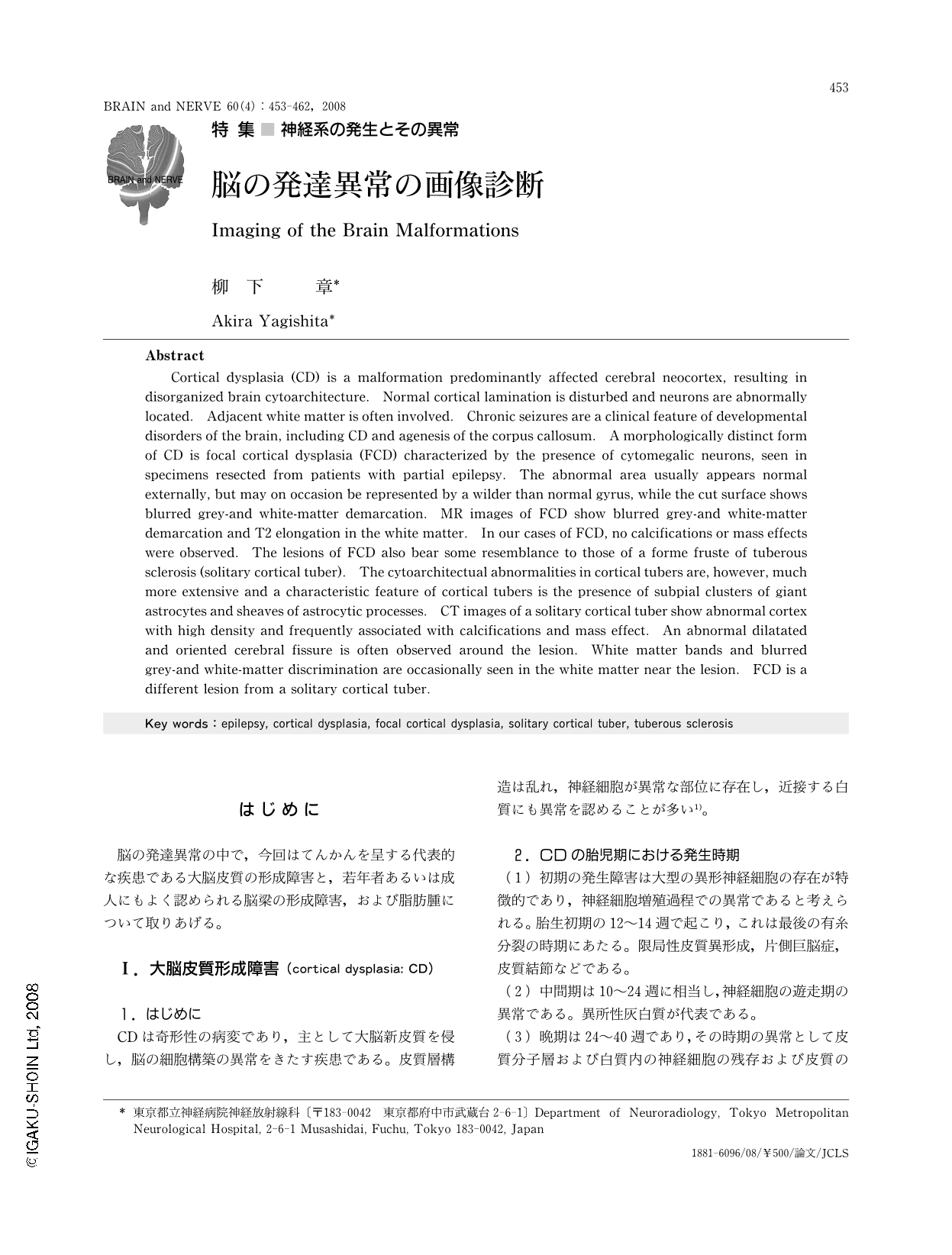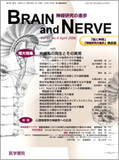Japanese
English
- 有料閲覧
- Abstract 文献概要
- 1ページ目 Look Inside
- 参考文献 Reference
はじめに
脳の発達異常の中で,今回はてんかんを呈する代表的な疾患である大脳皮質の形成障害と,若年者あるいは成人にもよく認められる脳梁の形成障害,および脂肪腫について取りあげる。
Abstract
Cortical dysplasia (CD) is a malformation predominantly affected cerebral neocortex, resulting in disorganized brain cytoarchitecture. Normal cortical lamination is disturbed and neurons are abnormally located. Adjacent white matter is often involved. Chronic seizures are a clinical feature of developmental disorders of the brain, including CD and agenesis of the corpus callosum. A morphologically distinct form of CD is focal cortical dysplasia (FCD) characterized by the presence of cytomegalic neurons, seen in specimens resected from patients with partial epilepsy. The abnormal area usually appears normal externally, but may on occasion be represented by a wilder than normal gyrus, while the cut surface shows blurred grey-and white-matter demarcation. MR images of FCD show blurred grey-and white-matter demarcation and T2 elongation in the white matter. In our cases of FCD, no calcifications or mass effects were observed. The lesions of FCD also bear some resemblance to those of a forme fruste of tuberous sclerosis (solitary cortical tuber). The cytoarchitectual abnormalities in cortical tubers are, however, much more extensive and a characteristic feature of cortical tubers is the presence of subpial clusters of giant astrocytes and sheaves of astrocytic processes. CT images of a solitary cortical tuber show abnormal cortex with high density and frequently associated with calcifications and mass effect. An abnormal dilatated and oriented cerebral fissure is often observed around the lesion. White matter bands and blurred grey-and white-matter discrimination are occasionally seen in the white matter near the lesion. FCD is a different lesion from a solitary cortical tuber.

Copyright © 2008, Igaku-Shoin Ltd. All rights reserved.


